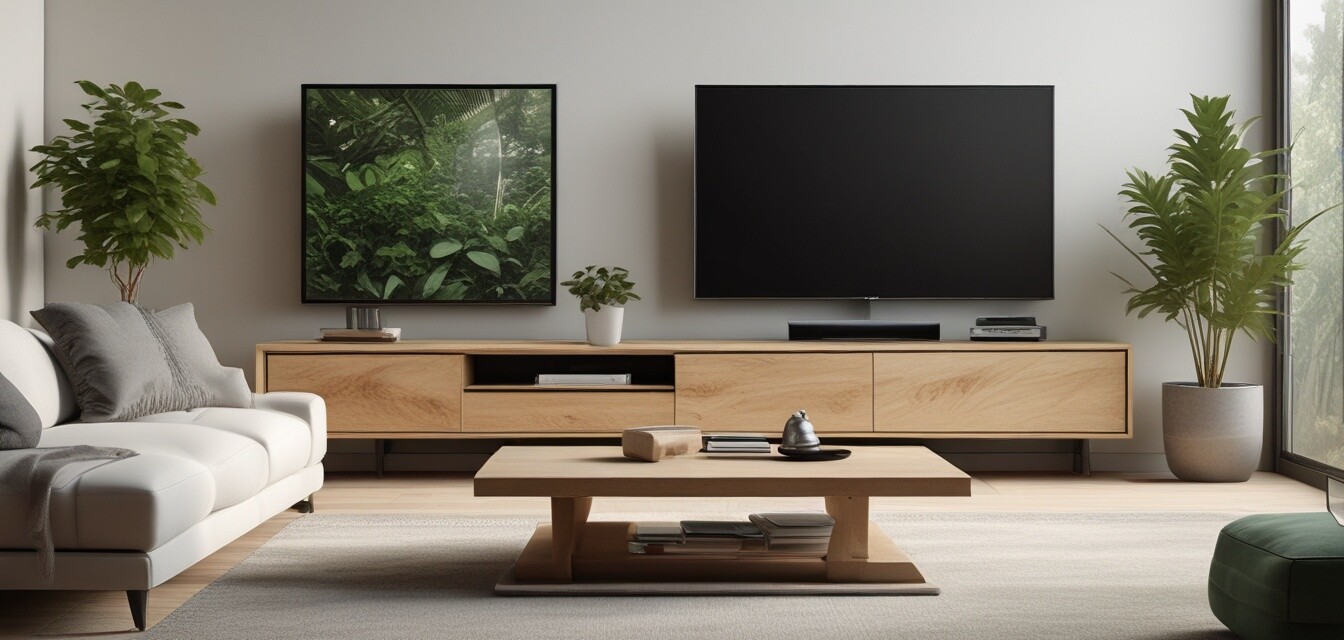
The Marketing of Sustainable Furniture
Key Takeaways
- Sustainable furniture is becoming a vital part of consumer choices.
- Marketing strategies need to highlight eco-friendly materials and production methods.
- Transparency in supply chains attracts environmentally-conscious buyers.
- Trends show a rise in demand for sustainable TV stands and furniture.
- Companies that align their branding with sustainability enjoy a competitive edge.
The furniture industry is witnessing a significant transformation as consumers become increasingly environmentally conscious. The marketing of sustainable furniture, especially TV stands, is adapting to meet the demands of this eco-aware population. This article delves into how sustainability is being marketed in the furniture sector and its implications for future trends.
The rise of sustainable furniture
As discussions about climate change and environmental impact gain traction, many consumers have started prioritizing sustainable options in their purchasing decisions. Here are some reasons driving the rise of sustainable furniture:
- Increased Awareness: Consumers are more aware of ecological issues and are actively seeking out products that reflect their values.
- Health Benefits: Eco-friendly furniture is often made from natural materials, which can contribute to healthier indoor environments.
- Recycling and Upcycling: Many brands are embracing recycling and upcycling strategies, offering creative and stylish alternatives.
Marketing strategies for sustainable furniture
When it comes to sustainable furniture, effective marketing strategies are crucial. Companies that highlight their commitment to eco-friendliness gain a competitive edge. Here are some key strategies:
1. Highlight sustainable materials
Marketing campaigns should emphasize the use of sustainable materials like reclaimed wood, bamboo, and recycled metals. Educating consumers about these materials can foster a sense of connection, promoting their importance.
2. Transparent sourcing
Consumers appreciate brands that are transparent about their sourcing and manufacturing processes. Providing information about the origins of materials helps build trust.
3. Storytelling
The power of storytelling can make sustainable furniture resonate with customers. Sharing the journey of each piece, from design conception to final product, adds emotional value and enhances the buyer's experience.
4. Eco-labeling
Utilizing eco-labels or certifications can further boost the credibility of a brand. These labels assure consumers that the product meets specific environmental standards.
Trends in sustainable TV stands
As more people set up home cinema experiences, sustainable TV stands are gaining popularity. Here’s a look at some emerging trends:
| Trend | Description |
|---|---|
| Minimalist Design | Simple, clean lines are favored to complement eco-friendly aesthetics while ensuring functionality. |
| Modular Systems | Flexible, adaptable designs allow consumers to customize their setups, reducing waste. |
| Natural Finishes | Using natural stains and finishes enhances the beauty of sustainable woods and showcases their uniqueness. |
| Tech-Integration | Incorporating smart technology in design improves user experience without compromising sustainability. |
The impact of consumer behavior
Understanding consumer behavior is critical for furniture businesses. Trends show that consumers are increasingly willing to pay a premium for sustainably-produced products. Here’s what shapes these behaviors:
- Value Alignment: Consumers want to support companies that reflect their ethical beliefs.
- Innovative Designs: Unique, inventive furniture designs attract eco-conscious buyers.
- Social Responsibility: Brands that contribute to social causes or charitable initiatives find favor with consumers.
The future of sustainable furniture marketing
As the market for sustainable furniture continues to grow, brands must adapt their marketing strategies to stay relevant. Here are some projections for the future:
- Sustainability may become a standard expectation rather than a unique selling proposition.
- Emerging technologies, such as augmented reality, will enhance online shopping experiences, allowing customers to visualize furniture in their spaces.
- The focus on local sourcing will likely increase, encouraging consumers to support nearby businesses.
Pros
- Increased demand for sustainable products.
- Positive brand perception associated with eco-friendliness.
- Potential for premium pricing due to sustainability appeals.
Cons
- Higher production costs for sustainable materials.
- Risk of greenwashing if not transparently marketed.
- Consumer skepticism about sustainability claims.
Conclusion
The marketing of sustainable furniture, particularly TV stands, is transforming the industry landscape. Brands that successfully convey their commitment to sustainability while connecting emotionally with consumers will thrive. As buyers increasingly seek options that align with their values, companies must respond with transparency, innovation, and creativity in their marketing approaches. Staying informed about trends in sustainable furniture can provide businesses with a competitive edge in the evolving market. For further insights on sustainable furniture options, visit our [Eco-Friendly Living](https://yourwebsite.com/blog/eco-friendly-living) section or explore our [Buying Guides](https://yourwebsite.com/blog/buying-guides) to make informed choices.